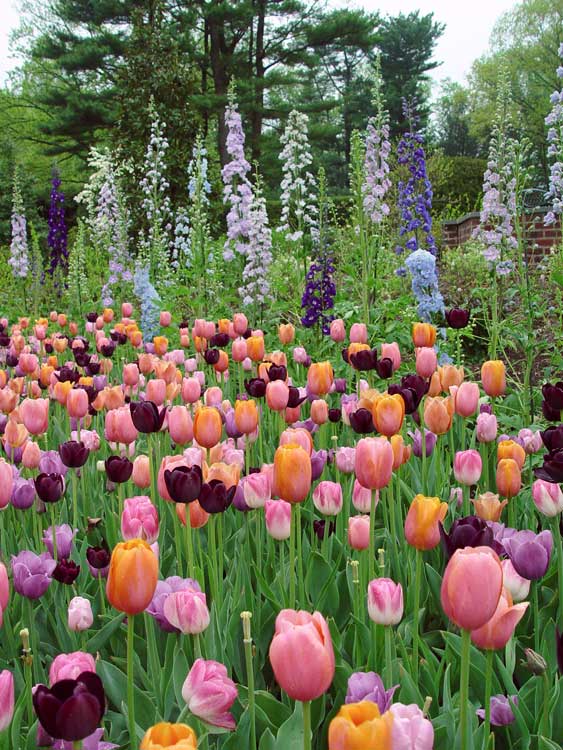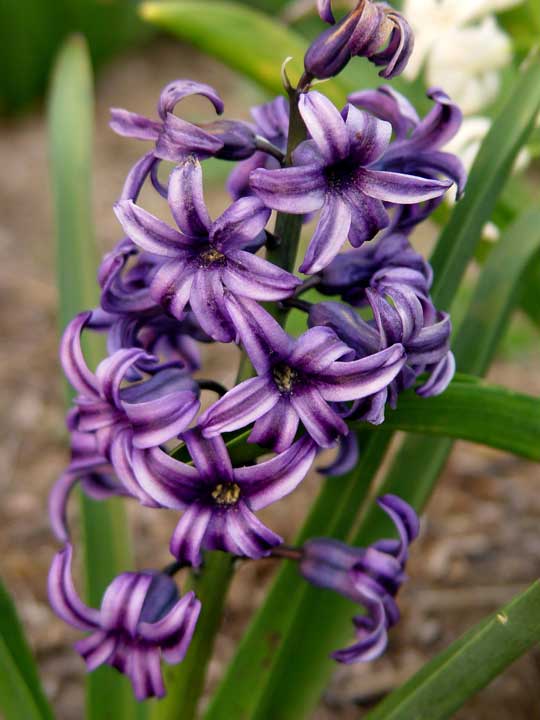How it Works: Preen Garden Weed Preventers
Here's how our Garden Weed Preventers prevent weeds before they even sprout rather than killing them after they’ve already had the chance to grow.
Best bulb practices and tips for planting, care, weed control and where to plant your bulbs.

Bulbs are best planted in drifts and groups rather than lined up single file across the front of a bed.
Spring bulbs are among the easiest plants to grow. Most are planted in fall, where they languish for months until magically sprouting in spring. After bloom time, they mysteriously die back underground and disappear for the rest of the season. In cooler parts of the United States plant them in mid-September through mid-November when the soil has cooled; in warmer parts of the South and West (that lack a natural winter cooling period) plant artificially pre-chilled bulbs each fall. Select a sunny spot with well drained soil for best performance. Plant with the pointed end up, at a depth of about 3 times as deep as the bulb’s size from top to bottom. Water well after planting, and within weeks the bulbs start to put down roots.
In spring, after the appropriate time according to their species, leaves sprout and ultimately flowers emerge. Apply a light dressing of a balanced, granular fertilizer each spring and fall for best results. After bloom is over wait until the foliage browns or at least yellows to cut them back, or let them die back naturally. Don’t be too impatient as the dying foliage is manufacturing food to store in the bulbs for next year’s bloom.
Since bulbs are live plants, weed preventers don’t affect them as they do seeds. To control weeds among bulbs, scatter Preen Garden Weed Preventer over the beds in early spring according to label directions. Bulbs are seldom bothered by bugs or diseases, so spraying is unnecessary. If bulb flowers diminish in size over time, the clumps are probably overcrowded. Sometimes a few bulbs may have deformed foliage and flowers. These may be infected with a virus and should be removed and disposed of in the trash, not on the compost pile. Most bulbs will come back for years, some better than others. Tulips for example do not perennialize as well as daffodils.

Use fragrant bulbs such as hyacinths along walkways, in containers, or near windows where their scent is best appreciated.
One of the best spots to plant fall bulbs is in a sunny front yard or the highest-traffic spot where both you and passersby will get the most enjoyment. Think drifts or clusters when planting. Bulbs look best planted in groups of 10 or more rather than lined up single-file regimental style. The more bulbs the better. Planting a single 6-pack of tulip bulbs will look like a drop in the ocean in an average-sized front yard. If you only have 6 or so, put them all in one place together. Plant additional groups of bulbs throughout the yard. This will give the effect of a series of living bouquets. Make the most of fragrance in hyacinths, tulips and daffodils. These make good choices under windows, along walks, in containers, and next to patios where their fragrance can be appreciated.
For extended bloom time, interplant with bulbs that flower at different times or by alternating groups of different bulbs. Some of the earliest bulbs to bloom (early March in America’s midsection) include crocuses, snowdrops, and netted iris (Iris reticulata). As those wind down, windflowers (Anemone blanda), daffodils, hyacinths, Siberian squill (Scilla sibirica), and glory-of-the-snow (Chionodoxa lucillae) start their season. Then come tulips, grape hyacinths (Muscari), and ornamental onions (Allium) to finish off the show in late spring into early summer.
Pots and planters can be planted with a mix of bulbs in fall for spring color. Use a heavy concrete urn, a large plastic pot or other container that won’t crack in freezing weather, and water occasionally during dry, thawed-out winter spells. Keep the soil moist until it freezes. If you use several different types of bulbs that bloom at different times, these can be layered at planting time with the earliest closest to the surface.
Be patient while the bulbs root and prepare for spring. They will provide welcome color at a time when most of the rest of the landscape is barely waking from winter hibernation.